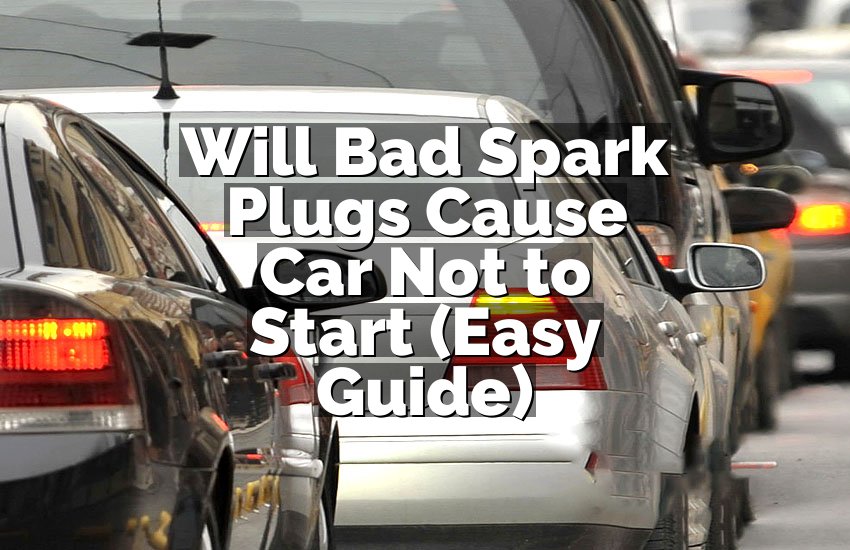Are you wondering how long your baby’s car seat will stay safe and usable? You’re not alone. Infant car seats are super important for keeping your little one safe on the road, but they don’t last forever. This article will explain everything you need to know. We’ll cover expiration dates, safety rules, and tips to make sure your baby’s car seat is always ready to protect them.
Why Infant Car Seats Have Expiration Dates
Infant car seats are a must-have for keeping babies safe in cars, but did you know they come with an expiration date? This isn’t just a random rule—it’s about keeping your baby protected. Let’s break down why these expiration dates exist and what they mean for you as a parent.
What Are Expiration Dates?
Every infant car seat has a date printed on it that tells you when it’s no longer safe to use. This is called the expiration date. It’s usually found on a sticker on the side or bottom of the car seat. Most infant car seats last about 6 to 10 years from the date they were made. The expiration date is there because car seats go through wear and tear over time, and the materials can weaken. Even if the car seat looks fine, it might not protect your baby as well as it should after the expiration date.
Why Do Car Seats Expire?
Car seats are made of plastic, foam, and fabric, which can break down over time. Things like heat, cold, and sunlight can make the plastic brittle or weaken the straps. If a car seat is too old, it might not hold up in a crash, which is super scary to think about. Also, safety rules for car seats change as experts learn more about what keeps kids safe. Older car seats might not meet the latest safety standards, so using a new one ensures your baby has the best protection possible.
What Happens If You Use an Expired Car Seat?
Using an expired car seat is risky. The materials might not be strong enough to keep your baby safe in an accident. Plus, if you’re in a crash and your insurance company finds out the car seat was expired, they might not cover any related costs. It’s also against the law in some places to use an expired car seat, so you could get a fine. To keep your baby safe and avoid trouble, always check the expiration date and replace the car seat when it’s time.
How to Find the Expiration Date
Finding the expiration date is easy once you know where to look. Check the bottom or side of the car seat for a sticker that says “Do Not Use After” or lists a specific date. Some car seats might also have the manufacturing date, and you can add 6 to 10 years to figure out when it expires. If you can’t find the sticker, check the car seat’s manual or contact the manufacturer. Knowing the expiration date helps you plan when to get a new car seat for your baby.
How to Check If Your Infant Car Seat Is Safe
Even if your car seat hasn’t reached its expiration date, you need to make sure it’s still safe to use. There are a few things to check to ensure your baby’s car seat is in top shape. Let’s go over how to inspect it and what to look for.
Look for Damage or Wear
Start by checking the car seat for any signs of damage. Look at the plastic shell for cracks or dents. Even small cracks can make the car seat less safe. Next, check the straps and harness. Are they frayed, stretched, or faded? If they don’t look strong, they might not hold your baby securely. Also, make sure the buckles and clips work smoothly. If anything looks worn out or broken, it’s time to replace the car seat, even if it’s not expired yet.
Check for Recalls
Sometimes, car seats get recalled because of safety issues. A recall means the manufacturer found a problem that could make the car seat unsafe. To check for recalls, visit the manufacturer’s website or the National Highway Traffic Safety Administration (NHTSA) website. You’ll need the car seat’s brand, model, and manufacturing date, which you can find on the sticker. If your car seat is recalled, follow the manufacturer’s instructions to fix it or get a replacement. This step is super important to keep your baby safe.
Make Sure It Fits Your Baby
Infant car seats are designed for babies up to a certain weight and height, usually around 30 to 35 pounds or 32 inches tall. Check the car seat’s manual to see its limits. If your baby is too big, the car seat won’t protect them properly, even if it’s not expired. Look at the harness straps—they should sit at or below your baby’s shoulders. If your baby has outgrown the car seat, it’s time to switch to a convertible or toddler car seat.
Proper Installation Matters
A car seat can be brand new, but if it’s not installed correctly, it won’t keep your baby safe. Always follow the car seat’s manual and your car’s manual for installation instructions. Use either the car’s seat belt or the LATCH system (Lower Anchors and Tethers for Children) to secure the car seat tightly. The car seat shouldn’t move more than an inch side to side when you tug on it. If you’re not sure it’s installed right, visit a local car seat inspection station where experts can check it for you.
When to Replace Your Infant Car Seat
Knowing when to replace your infant car seat is key to keeping your baby safe. There are several situations where you’ll need to get a new one, even if the car seat hasn’t reached its expiration date. Let’s explore when and why you should replace it.
After a Car Accident
If your car is in an accident, you should replace the car seat, even if it looks okay. A crash can weaken the car seat’s structure, making it less safe for future use. The NHTSA says to replace the car seat after any moderate or severe crash. For minor crashes, check the car seat’s manual—some brands say it’s okay to keep using it if there’s no visible damage and the crash was very minor. When in doubt, it’s better to be safe and get a new car seat.
If Your Baby Outgrows It
As your baby grows, they’ll eventually get too big for their infant car seat. Most infant car seats are designed for babies up to 30 to 35 pounds or 32 inches tall, but always check the manual for your specific model. If your baby’s head is close to the top of the car seat or the harness straps don’t fit properly, it’s time to move to a convertible car seat. Using a car seat that’s too small is dangerous because it won’t protect your baby properly in a crash.
If the Car Seat Is Damaged
Any damage to the car seat means it needs to be replaced. This includes cracks in the plastic, frayed straps, or broken buckles. Even small damage can make the car seat less effective in a crash. Also, avoid using a secondhand car seat unless you know its full history. If it’s been in an accident or has missing parts, it’s not safe. Always inspect the car seat regularly and replace it if you notice any problems.
When It Reaches the Expiration Date
Once the car seat hits its expiration date, it’s time to stop using it. The materials might not be strong enough to protect your baby, and the car seat might not meet current safety standards. Don’t try to “stretch” the car seat’s life—it’s not worth the risk. Instead, recycle the car seat if possible or cut the straps and throw it away so no one else can use it. Then, get a new car seat that’s safe and up to date.
Tips for Choosing and Using a New Infant Car Seat
When it’s time to replace your infant car seat, picking the right one and using it correctly is super important. Here are some easy tips to help you choose a new car seat and keep your baby safe on every ride.
Pick a Car Seat That Fits Your Needs
When shopping for a new infant car seat, think about what works best for your family. Look for a car seat that fits your car’s size and has features you like, such as an easy-to-carry handle or a base that stays in the car. Check the car seat’s weight and height limits to make sure it will last until your baby is ready for the next stage. Also, read reviews from other parents and check safety ratings on the NHTSA website to find a reliable model.
Follow Safety Standards
Always choose a car seat that meets current safety standards. In the U.S., car seats must meet Federal Motor Vehicle Safety Standards (FMVSS). Look for a label on the car seat that says it complies with these standards. Also, consider car seats with extra safety features, like side-impact protection or an anti-rebound bar, which can give your baby even more protection in a crash. A car seat that meets or exceeds safety standards is a smart choice for your little one.
Install It Correctly
Installing the car seat properly is just as important as choosing the right one. Read the car seat’s manual and your car’s manual carefully. Use the LATCH system or seat belt to secure the car seat tightly, and make sure it doesn’t move more than an inch when you pull on it. Adjust the harness straps so they’re snug and sit at or below your baby’s shoulders. If you’re unsure about the installation, visit a car seat inspection station for help from a certified technician.
Register Your Car Seat
After buying a new car seat, register it with the manufacturer. This is super easy—you can usually do it online or by mailing a card that comes with the car seat. Registering the car seat means the manufacturer will let you know if there’s ever a recall. That way, you can fix any safety issues right away and keep your baby protected. It only takes a few minutes, and it’s a simple way to stay informed about your car seat’s safety.
I hope this article helped you understand how long infant car seats last and how to keep your baby safe. By checking expiration dates, inspecting for damage, and replacing the car seat when needed, you’re doing your best to protect your little one. Always choose a car seat that meets safety standards and install it correctly. If you have more questions, check out the FAQs below or talk to a car seat expert. Stay safe on the road!
Frequently Asked Questions
Is it okay to use a secondhand infant car seat?
Using a secondhand car seat can be risky. You need to know its full history to ensure it hasn’t been in a crash or damaged. Check the expiration date and make sure all parts, like the manual and straps, are included. If the car seat is expired, damaged, or missing parts, don’t use it. It’s best to buy a new car seat or get a used one from someone you trust who can confirm it’s safe.
Can I use an infant car seat after a minor crash?
After a minor crash, check your car seat’s manual. Some brands say it’s okay to keep using the car seat if there’s no visible damage and the crash was very minor, like a low-speed fender bender. However, for moderate or severe crashes, replace the car seat. If you’re unsure, contact the manufacturer or replace it to be safe. Your baby’s safety is worth the extra caution.
Do I need to replace the car seat base too?
If your car seat base was in a crash, you should replace it, especially if it’s damaged or part of a recall. For expiration, check if the base has its own expiration date—some do. If the base is undamaged and not expired, you might be able to use it with a new car seat from the same brand. Always check the manual or contact the manufacturer to confirm.
Is it safe to clean an infant car seat with bleach?
Avoid using bleach to clean your car seat, as it can weaken the straps and fabric. Instead, use mild soap and water to clean the shell and cover, following the manual’s instructions. For the harness, wipe it with a damp cloth and let it air dry. Check the manual for specific cleaning tips to keep the car seat safe and effective.
Can I use an infant car seat on an airplane?
Yes, you can use an infant car seat on an airplane if it’s FAA-approved. Check the car seat’s label to confirm it says “Certified for use in motor vehicles and aircraft.” Install it in a window seat, following the car seat’s manual. Using a car seat on a plane keeps your baby secure and comfortable. Contact the airline for specific rules before you travel.
Do I need a car seat for a newborn?
Yes, a car seat is essential for a newborn. Hospitals won’t let you take your baby home without one, and it’s the law in most places. An infant car seat is designed to protect newborns, with proper support for their head and body. Make sure it’s installed correctly and fits your baby snugly. A car seat keeps your newborn safe from day one.
Is it okay to let my baby sleep in the car seat at home?
Letting your baby sleep in a car seat at home isn’t recommended. Car seats are designed for travel, not long-term sleep. Sleeping in a car seat for too long can restrict breathing or cause head slumping, which is unsafe. For naps or bedtime, move your baby to a flat, firm surface like a crib or bassinet. Always supervise your baby in the car seat.
Can I reuse an infant car seat for my next child?
You can reuse an infant car seat for another child if it’s not expired, hasn’t been in a crash, and has no damage. Check the expiration date, inspect the straps and shell, and ensure it meets current safety standards. If everything checks out, it’s safe to reuse. If the car seat is too old or damaged, replace it to keep your new baby safe.


